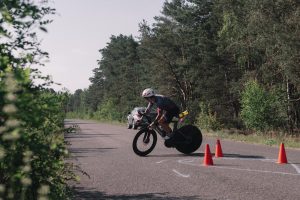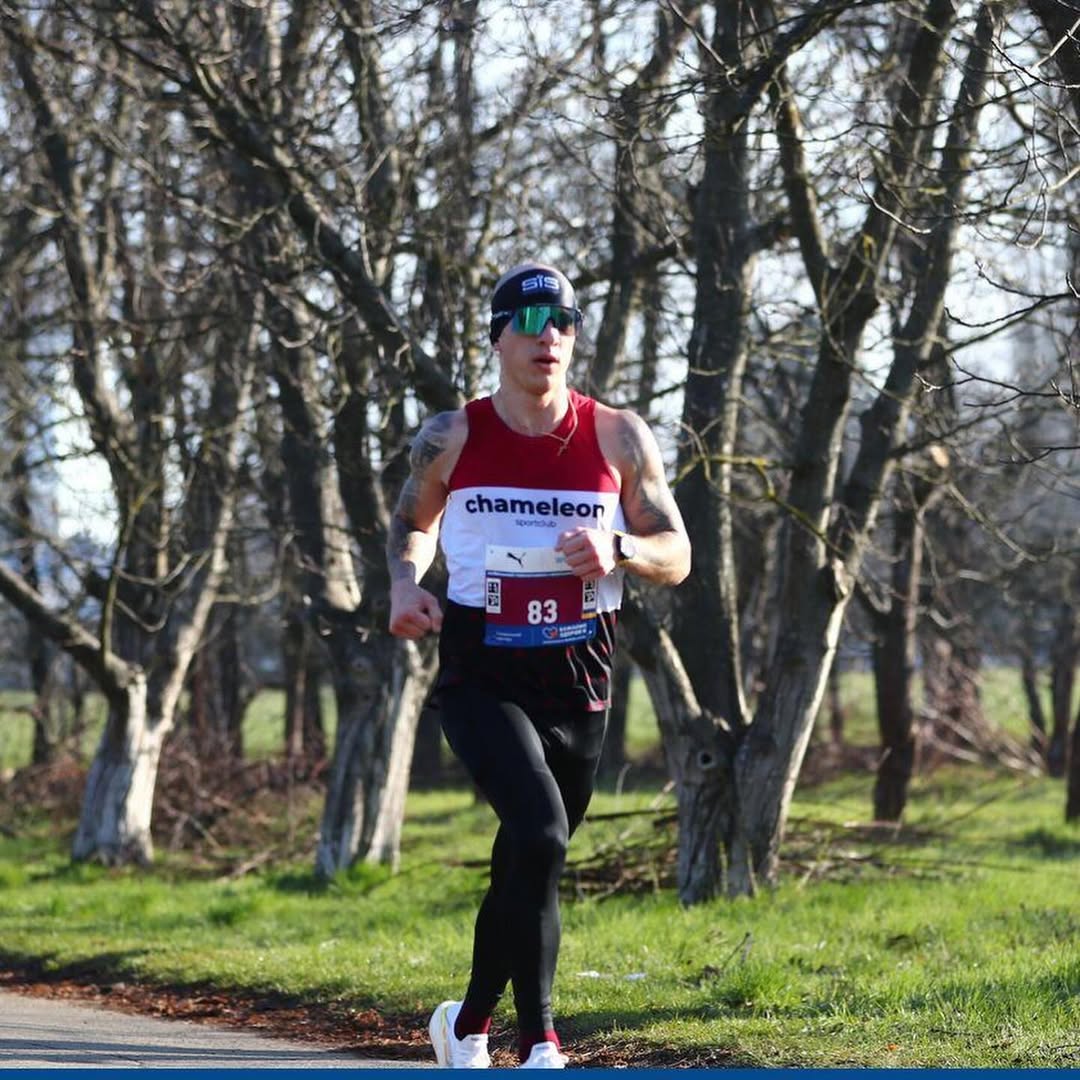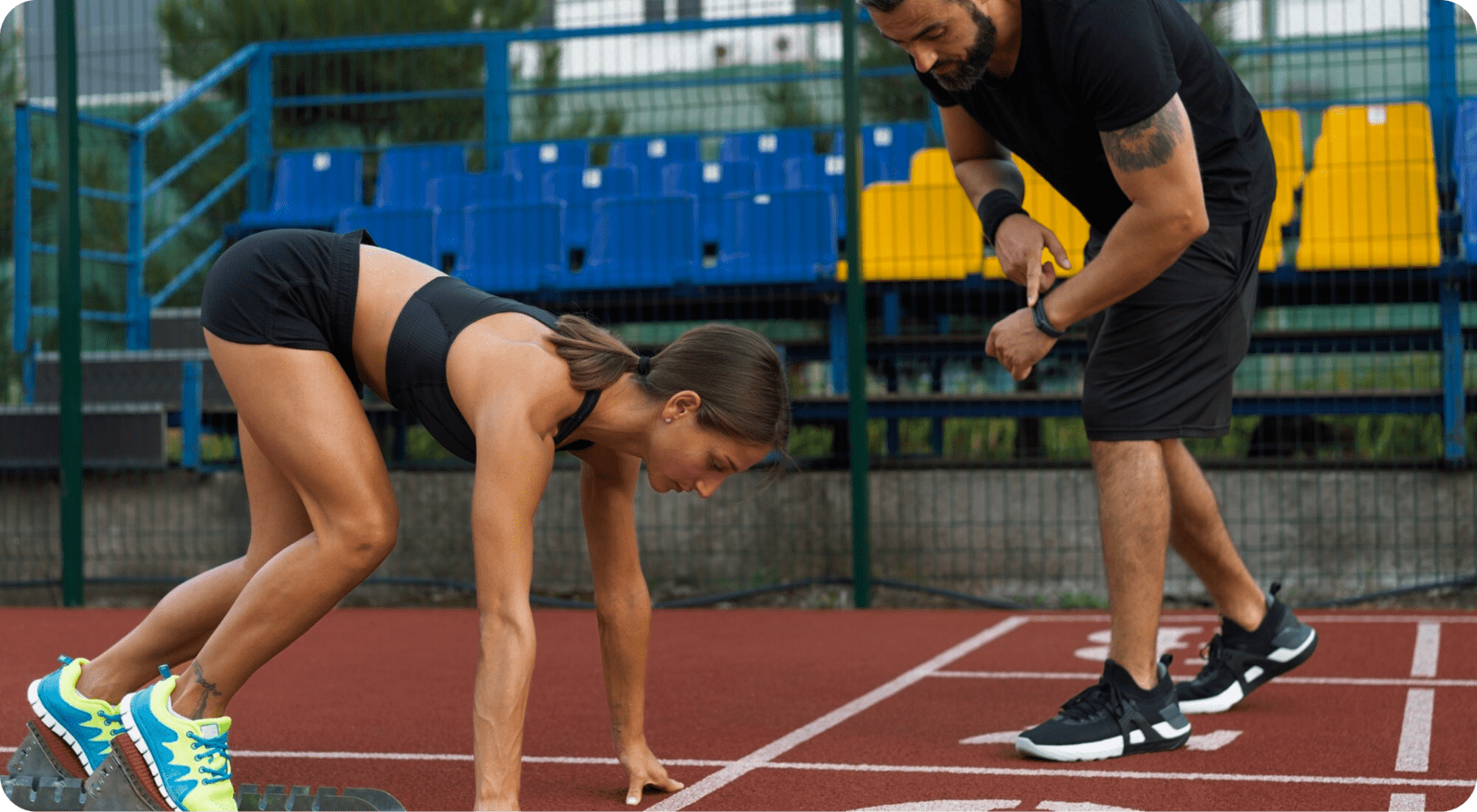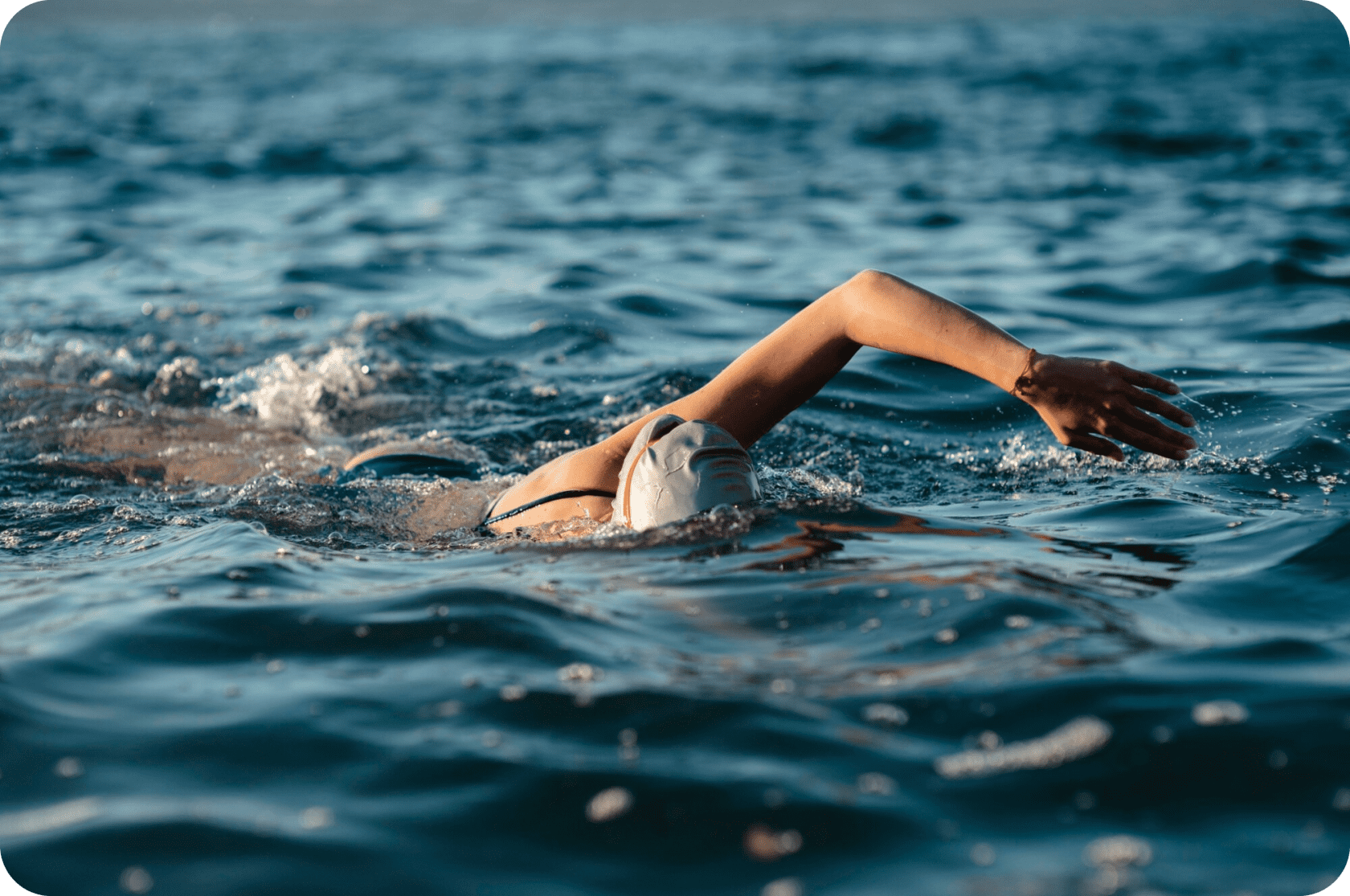Trace day nerves? Totally normal, since triathlon races are multi-discipline endurance events that combine swimming, biking, and running, each with its own set of rules and strategies. So, it’s understandable that athletes may make some mistakes during the race or when training. But some triathlete mistakes are pretty obvious yet still often overlooked by athletes, and most of them are avoidable. Here are seven things triathletes often get wrong right before or during the race, with simple tips to dodge them.
Mistake #1: Not Testing Race Gear in Training
Many athletes buy new triathlon gear — a sleek tri suit, fresh shoes, or swim goggles — and save it for race day, thinking it’ll be their “secret weapon.” But race day is not the time for surprises. New gear often behaves differently in swim, bike then run workouts than it does during the race.
There are a lot of things that can go wrong on race morning, like:
- Chafing: A tri suit might feel fine when you try it on, but during a wet swim or long run, seams can rub your skin raw.
- Blisters: Even shoes labeled “race-ready” can cause blisters if they aren’t broken in.
- Leaky goggles: New goggles may fog up, leak, or feel uncomfortable after a few minutes in the water.
To avoid these, do at least one full training session wearing your tri suit, race shoes, and goggles. This simulates real conditions — wetsuit under your wetsuit, running off the bike, etc. You’ll immediately notice if something feels off. Many athletes doing their first triathlon overlook this step. This can lead to unexpected issues on race day. So, try to properly train with your gear just to make sure you are comfortable and avoid surprises when it matters most.
And do not forget to break in your running shoes. Even lightweight race shoes need a few short runs to mold to your feet. You’ll identify any pressure points or sizing issues before race day.
If you’re racing with a new nutrition belt, race belt, or hydration system, test those too. Even small accessories can bounce, chafe, or distract you during the race.
Mistake #2: Wrong (or No) Tire Pressure on the Bike
Triathletes often pump their tires to the maximum PSI listed on the sidewall, thinking “higher = faster.” Others skip checking their tires altogether on race morning, especially if they pumped them the night before. Both are risky.
Tires pumped to max PSI can feel harsh, especially on bumpy roads. You lose comfort, and your tires may even bounce slightly, reducing grip and control. Plus, over-inflated tires are more prone to punctures, especially if you hit a sharp edge or pothole.
Also, forgetting to check your tire pressure on race day can lead to low PSI from overnight temperature drops. Soft tires roll slower, are harder to control in corners, and increase the risk of “pinch flats” if you hit a curb or pothole.
To avoid this:
Use a tire pressure calculator, such as the Silca Tire Pressure Calculator. This tool lets you enter your weight, bike type, and road conditions to get an ideal PSI recommendation. It’s usually lower than the max PSI but optimized for rolling resistance, grip, and comfort.
Check tire pressure on race day. Tire pressure can fluctuate overnight due to temperature changes. Even if you pumped them the night before, re-check them before heading to the transition area. Bring your pump — don’t rely on others.
Mistake #3: Starting in the Wrong Swim Position
Sometimes, even a seasoned triathlete can make mistakes at race starts as they seed themselves incorrectly at the swim start. For example, confident swimmers might start too far back and get stuck behind slower athletes, wasting energy weaving through traffic. Nervous or inexperienced swimmers, in their turn, tend to start at the front and get swum over, kicked, and panicked within seconds. In both cases, bad positioning can ruin your rhythm and confidence for the rest of the race.
How to Avoid It:
Seed yourself honestly: Know your estimated swim pace (e.g., time per 100m) and line up with the appropriate group. For example, if you typically swim 1:40/100m, don’t slot in with the 1:20 group, thinking you’ll “hang on” and swim faster. It won’t end well.
While there are fancy ways to sight in open water, beginners can simply swim a few strokes of breaststroke to get their bearings and stay on course.
Play it safe in mass starts: If it’s a mass start and you’re nervous or new to open water, position yourself to the side or the back of the pack. The outside lines might be a tiny bit longer, but you’ll get cleaner water, avoid the chaos, and swim at your own pace.
Practice open water starts: If possible, practice open water starts in swim training. Most swim training happens in the pool, but open water practice is important for race day. Getting used to the jostling and finding your space builds confidence for race day.

Mistake #4: Mounting/Dismounting the Bike Poorly
Transitions are known as the “fourth discipline” of triathlon for a reason. But many athletes lose valuable time — or worse, crash — because of awkward bike mounts and dismounts:
- In T1 (swim-to-bike): Struggling to get your feet into your shoes while wobbling down the road, or stopping completely to clip in. It’s crucial to know the exact location of the mount line in the transition zone to ensure a smooth bike mount and avoid time-consuming mistakes.
- In T2 (bike-to-run): Forgetting to unstrap your bike shoes ahead of the dismount line, forcing a sudden stop or risky flying leap, often leading to crashes or ankle twists.
What Can Go Wrong:
- You lose time fumbling with shoes or struggling to clip in.
- Wobbly mounts can cause accidents or force other athletes to brake behind you.
- Hard stops at the dismount line break your momentum and increase the chance of tripping or crashing.
- Forgetting to unstrap your shoes means you have to run through transition in cleats — slow and awkward.
How to Avoid It:
Practice flying mounts/dismounts (or at least smooth roll-throughs):
- A flying mount means your shoes are already clipped onto the bike, held level with elastic bands, so you can hop on, pedal up to speed, then slip your feet in.
- If that feels intimidating, practice quick, controlled mounts where you get one foot clipped in and push off smoothly — no wobbles, no panic.
- Dismount: About 100 meters before the dismount line, unstrap your shoes and ride with your feet on top of them. Glide into the dismount line, swing your leg over, and step off while the bike is still rolling (carefully!).
Use elastic bands to hold shoes horizontally:
- Attach elastic bands from your shoes to the bike frame or rear derailleur to keep them level and ready for a quick foot entry after mounting.
- The bands snap off naturally once you pedal away.
- This is a common trick in pro races — simple, effective, saves seconds.
Mistake #5: Bottle Placement & Nutrition Drops
Nutrition and hydration are your fuel, but poor setup or lack of practice often leads to:
- You miss a water bottle at an aid station during biking — suddenly, no fluids for 20–30 km, especially critical in hot races.
- Dropped gels mean missed calories, leading to energy crashes later in the race.
- Poor bottle placement forces you out of your aero position or makes grabbing drinks risky.
Practice your nutrition and hydration strategies during every long ride and especially after your longest bike session of the week. This helps you simulate race conditions, refine your intake plan, and prepare for the transition from biking to running.
When practicing bottle grabs, make sure you know how much fluid and calories you need to consume per hour during biking to optimize your performance and recovery.
How to Avoid It:
Train with race-day bottle placement. If you’re using a bottle between your aero bars (a common setup), practice drinking from it in training rides, especially at race pace.
Practice grabbing bottles from the downtube or behind the saddle without looking down or swerving.
If you rely on on-course aid stations, rehearse bottle grabs with a friend handing them to you — it feels awkward at first, but gets easier.
Also, remember to secure gels and nutrition properly. Electrical tape and rubber bands are your best friends. Tape gels to your top tube or stem so they peel off easily but won’t fall off over bumps.
Use a small bento box or top tube bag designed for tri bikes — much safer than haphazard taping if you prefer a cleaner setup. Test your nutrition setup on rough training rides to see what survives; don’t wait for race day completely unaware if the setup works.

Mistake #6: Ignoring Course-Specific Prep
Many triathletes show up on race day with only a vague or even absolutely no idea of the course layout. They rely on volunteers, training buddies, other athletes, or luck to guide them through.
- They don’t know where the steep climbs, sharp turns, or technical descents are.
- They’re unaware of rough road sections, potholes, or narrow bike paths.
- They miss strategic opportunities for pacing, fueling, or passing.
- They don’t know how many rows over their bike is in the transition area, which can lead to confusion and wasted time.
- They overlook the importance of reviewing the race’s athlete guide, missing out on crucial course details and transition area information.
What Can Go Wrong:
- You burn out early by pushing too hard on unexpected hills.
- Sharp turns or technical descents surprise you, increasing crash risk or forcing you to brake hard, losing time.
- Poor road surfaces cause punctures or bottle ejects if you’re not ready.
- You miss aid stations because you didn’t know where to expect them.
- Mentally, you feel unsure — uncertainty leads to stress and hesitation.
How to Avoid It:
Study the elevation profile:
- Look at the race website or app for the elevation map of the bike and run course, and be sure to review a comprehensive race-day checklist to ensure you have all the essentials prepared.
- Know where the climbs are — how steep and how long — so you can pace properly.
- Understand the descents — technical or straight? Fast or sketchy?
- If the swim is not in a pool, take time to familiarize yourself with the open water environment, as conditions like visibility and water movement can affect your performance.
Drive or ride the course (if possible):
- If you’re local or arrive early, drive or ride the course, especially the bike leg.
- Even walking sections of the run course can help you visualize key points.
- Pay attention to tricky corners, rough pavement, speed bumps, or narrow sections.
Mark visual landmarks for aid stations:
- It’s easy to forget where the aid stations are during the race. Look for clear landmarks like “after the big roundabout” or “just past the sharp left turn” to help you anticipate them.
- This helps you plan when to grab bottles, eat, or prepare mentally for the next section.
Check weather and wind patterns:
- Some courses are notorious for strong headwinds on certain sections — knowing this lets you conserve energy when needed.
Mistake #7: Overdressing or Underdressing for Race Conditions
Triathletes often get clothing choices wrong because they either:
- Assume wetsuits are allowed without checking the actual rules.
- Wear too much or too little for the bike or run leg, based on wishful thinking rather than actual weather conditions. Choosing the right clothing for unpredictable race day weather can be especially challenging, as conditions may change rapidly and make it difficult to stay comfortable throughout the event.
What Can Go Wrong
- Wetsuit confusion: If the water temperature is above the wetsuit cutoff (typically around 22–24°C for age-group races), you’re not allowed to wear one. Showing up unprepared can leave you scrambling for an alternative.
- Freezing on the bike: Coming out of the water wet into a chilly or windy bike leg can leave you cold, stiff, and struggling to perform, especially in early spring or late-season races.
- Overheating: Overdressing for a warm race leads to overheating, dehydration, and a higher perceived effort, especially on the run.
How to Avoid It
Check the weather and race rules. Race organizers publish water temperature updates in the days leading up to the race — monitor them closely. Know the wetsuit cutoff temperature for your specific event (it can vary by organizer or governing body).
Check the hourly forecast for air temperature and wind, especially for the early bike leg.
Pack flexible, easy-to-remove layers:
If conditions look borderline (cool morning, warming up later), bring arm warmers, a lightweight vest, or even gloves.
These items are easy to put on quickly in transition and can be removed mid-race if needed.
For cold races, consider toe covers or thicker socks for the bike.
Test your race kit in similar conditions. If your race is in cool or unpredictable weather, practice brick sessions in similar conditions. You’ll quickly learn what keeps you comfortable without overheating.
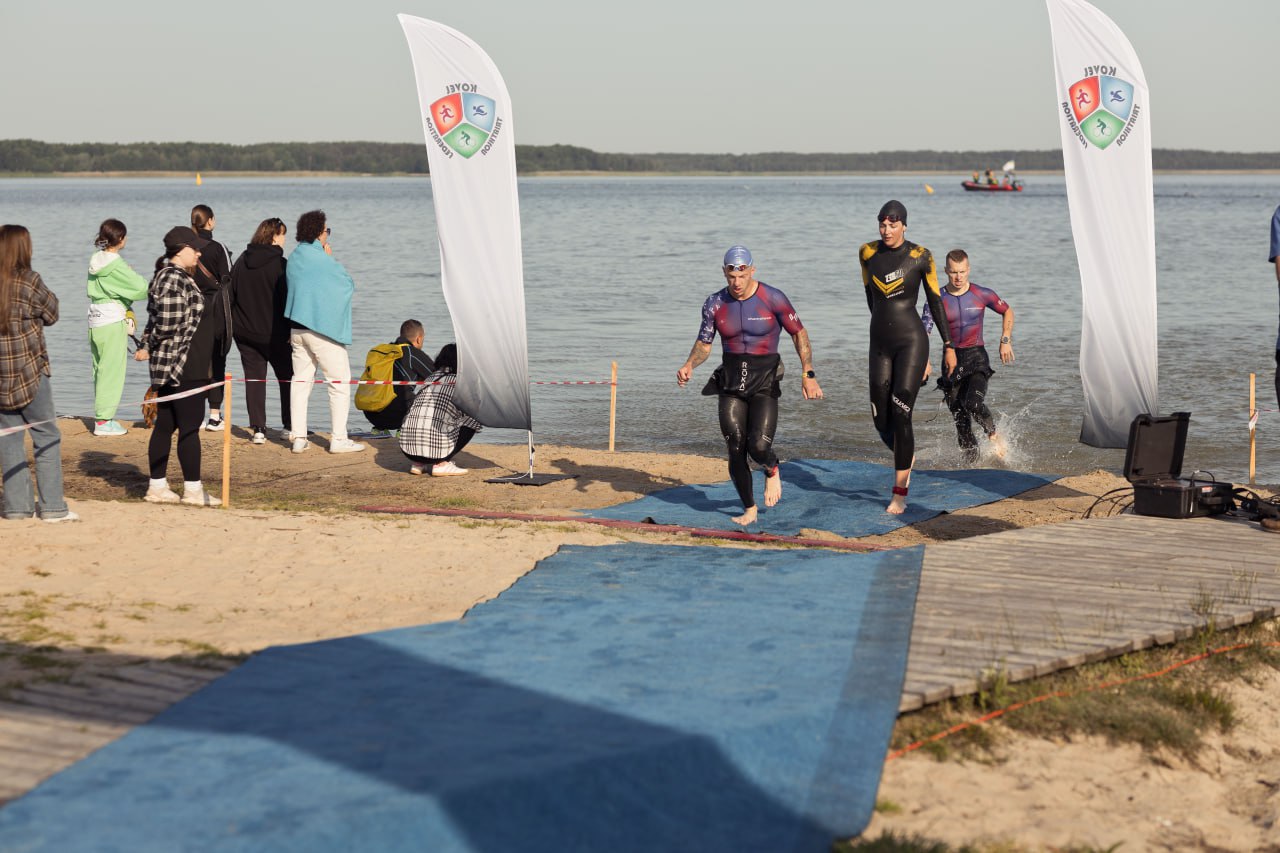
Conclusion: Beginner Triathlete Mistakes & How to Avoid Them
Great job creating your training plan and committing to your first race. But even with the best preparation, new triathletes make a few common mistakes that can ruin race day.
For age groupers, making mistakes is part of the learning process, but focusing on the individual disciplines, swimming, biking, and running, can help you improve and avoid many pitfalls.
From forgetting to test your race gear to missing your nutrition strategy, I have covered the most common mistakes that happen all the time. Starting swim in the wrong swim position, mounting the bike poorly, or overdressing for the conditions? Off course — literally and figuratively.
The good news? Every mistake is avoidable with a bit of planning and practice. Avoiding poor pacing and practicing running off the bike can make the race more fun and help you reach the finish line strong. Use this as your personal race’s athlete guide. Add to it as you gain experience. Improve it as you go. That’s how you build confidence, avoid rookie errors, and enjoy the race.
Train smart. Test everything. Stick to your nutrition strategy. Practice swimming, biking, and running together, swim, bike, and run, so you’re ready for race day. Most mistakes are easily avoidable with preparation. And most importantly, have fun out there.
